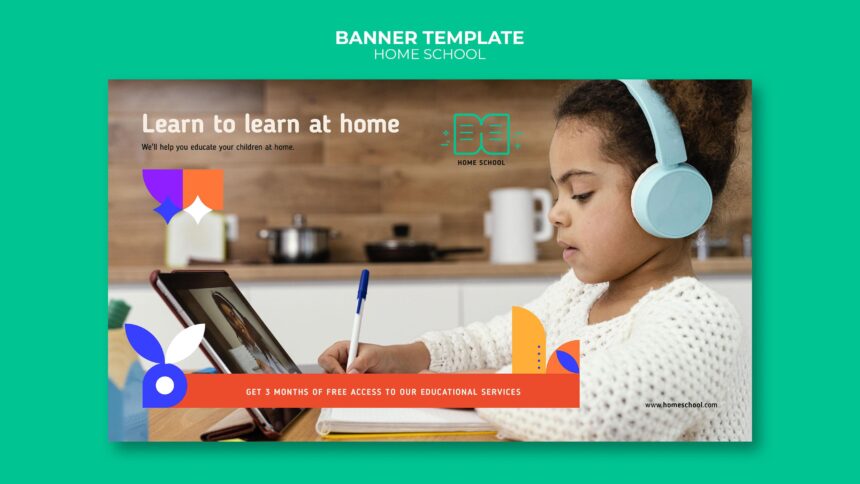Introduction
The education landscape has undergone a massive transformation in recent years, with online learning emerging as a dominant force. What started as a supplementary tool has now become a primary mode of education for millions worldwide. The COVID-19 pandemic accelerated this shift, but even as traditional classrooms reopen, online learning continues to thrive.
Why? Because it offers unparalleled flexibility, accessibility, and cost-effectiveness. From working professionals to stay-at-home parents, students of all ages are embracing digital education. But is online learning just a temporary trend, or is it here to stay?
In this comprehensive guide, we’ll explore the numerous benefits of online learning, debunk common myths, and examine why it’s becoming a permanent fixture in education.
1. Flexibility and Convenience
One of the most significant advantages of online learning is its flexibility. Unlike traditional classroom settings, online courses allow students to learn at their own pace and on their own schedule.
Key Benefits:
- Learn Anytime, Anywhere: No need to commute—study from home, a café, or even while traveling.
- Self-Paced Learning: Speed up or slow down based on your understanding of the material.
- Balancing Work & Education: Perfect for working professionals who want to upskill without quitting their jobs.
- Family-Friendly: Parents can study while managing household responsibilities.
Real-World Example:
Many universities now offer asynchronous courses, where students can watch lectures and complete assignments at their convenience. Platforms like Coursera and Udemy allow learners to access materials 24/7.
2. Accessibility for All
Online learning breaks down geographical and physical barriers, making education accessible to a broader audience.
Key Benefits:
- Global Reach: Students from remote areas can access world-class education.
- Inclusivity: People with disabilities can learn comfortably with adaptive technologies.
- Diverse Learning Resources: Access to multimedia content (videos, podcasts, interactive quizzes) enhances understanding.
Real-World Example:
Platforms like Khan Academy and edX provide free or low-cost courses from top institutions like Harvard and MIT, democratizing education.
3. Cost-Effectiveness
Traditional education often comes with high tuition fees, accommodation costs, and commuting expenses. Online learning eliminates many of these financial burdens.
Key Savings:
- No Commuting Costs: Save money on gas, public transport, or parking.
- Affordable Tuition: Many online programs are cheaper than on-campus degrees.
- Free Learning Resources: Open educational resources (OERs) reduce textbook costs.
Real-World Example:
Websites like Coursera and FutureLearn offer financial aid, and some universities provide fully online degrees at a fraction of the cost.
4. Wide Variety of Courses & Programs
From coding bootcamps to Ivy League certifications, online learning offers endless options.
Key Benefits:
- Niche Subjects: Learn specialized skills like AI, blockchain, or digital marketing.
- Lifelong Learning: Take short courses to stay updated in your field.
- Micro-Credentials: Earn digital badges and certificates to boost your resume.

Real-World Example:
Google Career Certificates on Coursera provide job-ready skills in high-demand fields like IT support and data analytics.
5. Improved Technical & Digital Skills
Engaging with online learning platforms naturally enhances digital literacy—a must in today’s job market.
Key Skills Gained:
- Navigating Learning Management Systems (LMS) like Moodle or Blackboard.
- Using collaboration tools (Zoom, Slack, Google Workspace).
- Understanding cybersecurity basics when accessing online resources.
Real-World Example:
Many employers now value candidates who are proficient in remote collaboration tools, a skill honed through online education.
6. Personalized Learning Experience
AI-driven platforms tailor courses to individual learning styles.
Key Benefits:
- Adaptive Learning: AI adjusts difficulty levels based on performance.
- Instant Feedback: Quizzes and automated grading provide real-time progress tracking.
- Customizable Learning Paths: Focus on areas where you need improvement.
Real-World Example:
Duolingo uses AI to personalize language lessons, ensuring users learn at an optimal pace.
7. Career Advancement Opportunities
Online learning helps professionals stay competitive without pausing their careers.
Key Benefits:
- Upskilling & Reskilling: Learn new technologies to stay relevant.
- Networking: Join global forums and LinkedIn groups related to your course.
- Employer Recognition: Many companies now accept online certifications as valid credentials.
Real-World Example:
Amazon’s “Career Choice” program funds employees’ online education in high-demand fields.
8. Eco-Friendly Learning
Reduced commuting and paper usage make online learning a sustainable choice.
Environmental Benefits:
- Lower carbon footprint from reduced travel.
- Digital textbooks reduce deforestation.
- Energy-efficient compared to running large campuses.
Real-World Example:
A study by the Open University found that online courses consume 90% less energy than traditional learning.
9. Enhanced Retention & Engagement
Interactive content (videos, gamification) improves knowledge retention.
Key Benefits:
- Multimedia Learning: Videos, infographics, and podcasts cater to different learning styles.
- Gamification: Badges and leaderboards motivate learners.
- Community Interaction: Discussion forums and peer reviews enhance understanding.
Real-World Example:
Platforms like Codecademy use interactive coding exercises to reinforce learning.
10. The Future of Online Learning
With advancements in VR, AI, and 5G, online education will only get better.
Emerging Trends:
- Virtual Reality (VR) Classrooms: Immersive learning experiences.
- AI Tutors: Personalized assistance 24/7.
- Blockchain Degrees: Tamper-proof digital credentials.
Real-World Example:
Medical students now use VR simulations for surgical training.
Conclusion: Online Learning is Here to Stay
The benefits of online learning—flexibility, affordability, accessibility, and innovation—make it an irreversible trend. While traditional education won’t disappear, digital learning will continue to grow, adapt, and redefine how we acquire knowledge.
Whether you’re a student, professional, or lifelong learner, embracing online education opens doors to endless opportunities. The future of learning is digital—and it’s brighter than ever.
Final Thoughts
- Start Small: Try a free course on platforms like Coursera or Khan Academy.
- Set Goals: Define what you want to achieve with online learning.
- Stay Consistent: Dedicate regular time to your studies.
The world of online education is vast and ever-evolving. Now is the perfect time to take advantage of it!
